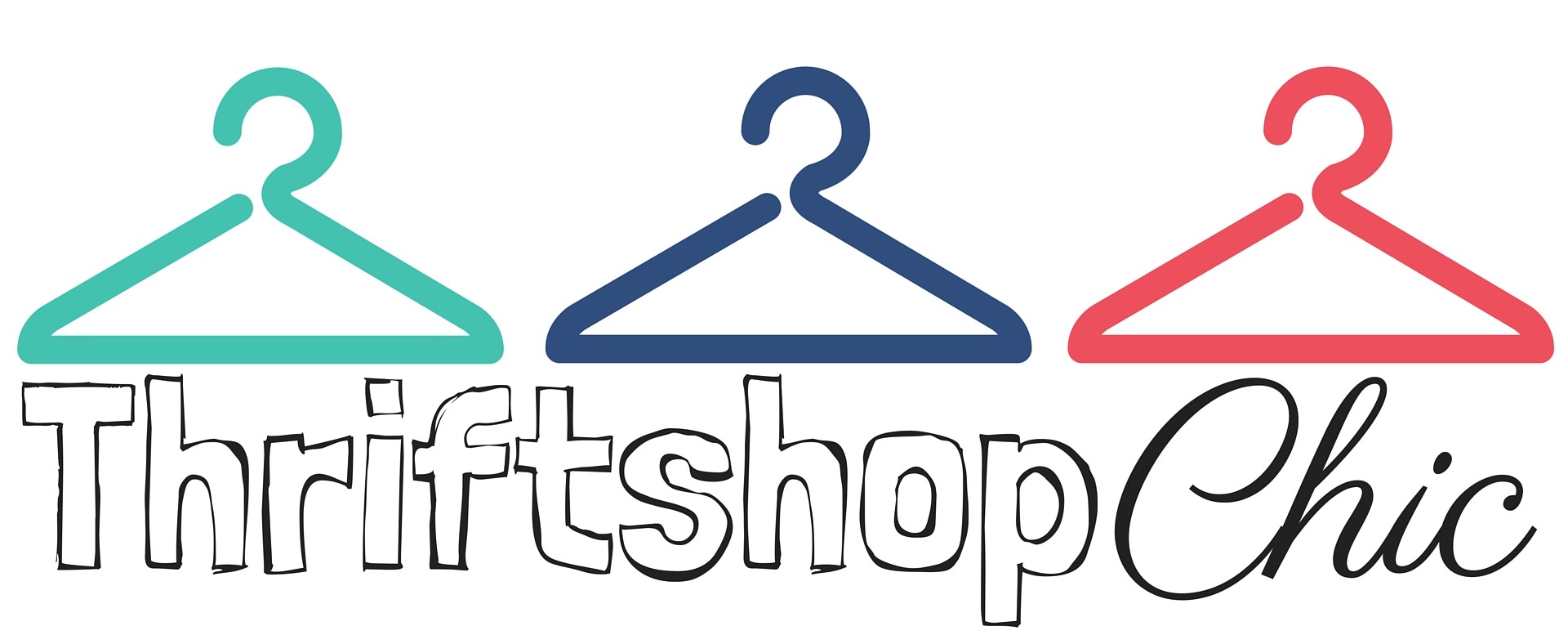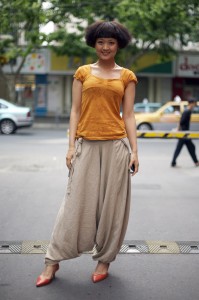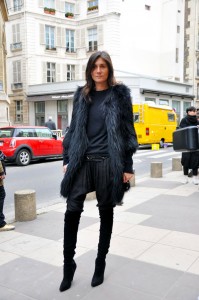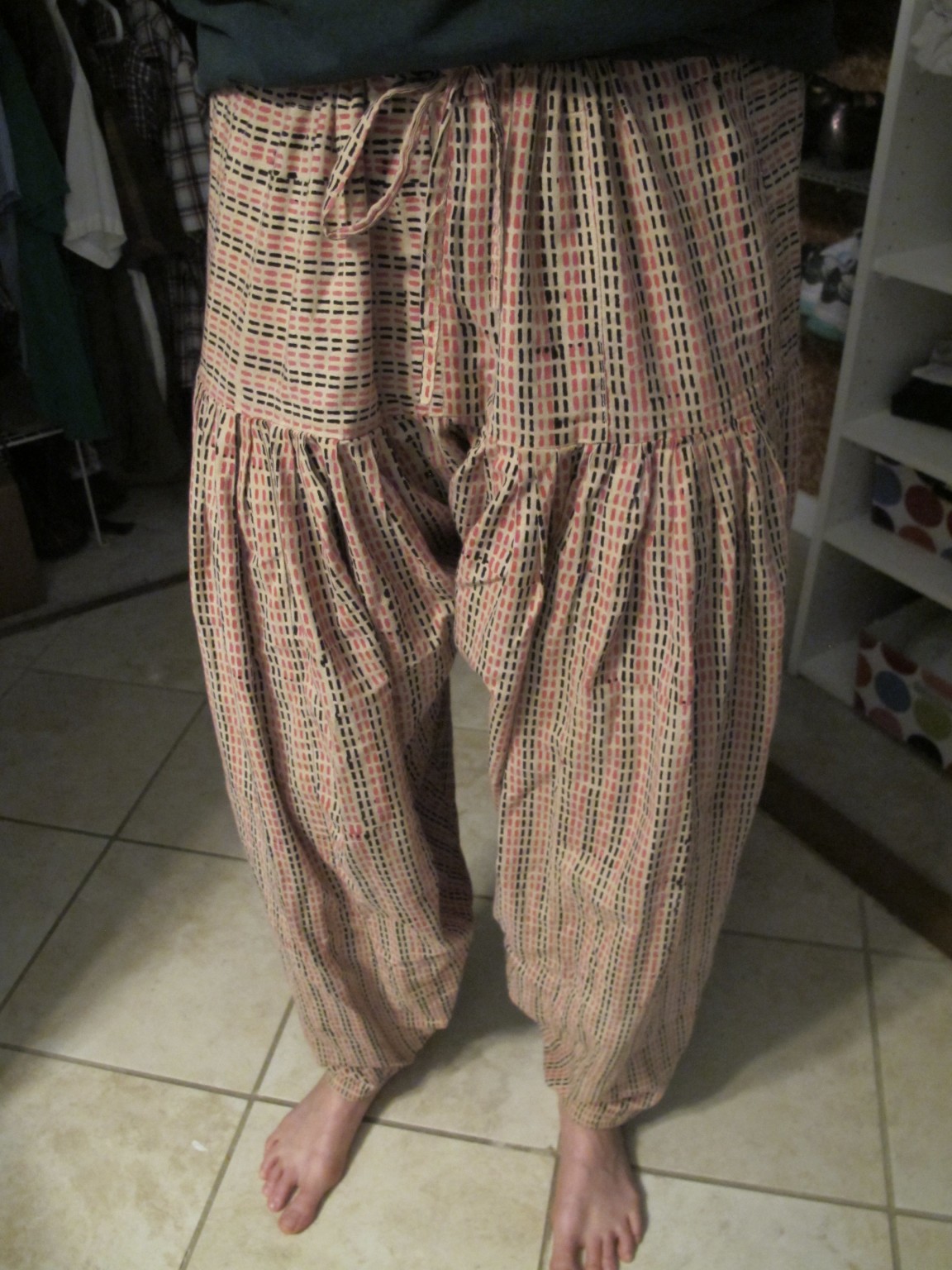Reader Ginna at Feet Chic sent me an email last week. (Head right over to her visually arresting blog chronicling chic street style footwear of all kinds!)
She asked what I thought about “harem” pants. She had seen them named as a trend in a style blog she reads and immediately felt “sick to [her] stomach.”
No, it wasn’t the baggy crotch or visions of MC Hammer dancing in her head that gave her the heeby-jeebies. These ladies sporting various street style takes on the pants in question look lovely, yes?
Source ; source. Even Emanuelle Alt got in on the trend – source.
Her concern was simply this: “harem” refers to the woman-only space in Turkish and Arabic cultures where the wives of a polygynous family were secluded away from men. And as Ginna so aptly puts it:
I don’t want to dress like a member of someone’s harem, or even wear something that alludes to that! Who thinks up the names for clothing that allude to women’s imprisonment / sex slavery, etc? Why do ‘harem pants’ sound so glamorous, then gross after you think about the significance?
It should be noted that a fair amount of exoticizing goes into Western perceptions of the harem as a space of female disempowerment. See Reina Lewis’ Rethinking Orientalism as a source for how Ottoman women within the harem wrote about it as a target for reform, but also as a space where women held their own and, at least in the upper classes, were often just as educated, refined, and modern as their Western counterparts. (British women, among the most frequent Western visitors to such harems, were, if married, still legally subordinate to their husbands until 1870 or 1882, the height of harem culture).
But even as harem inhabitants protested sexualized, demeaning Western depictions of themselves, they also worked to change the system so that women had more autonomy and access to the public sphere. So although harem members weren’t necessarily sex slaves any more than the British wives visiting their confines were, “harem” has continued to carry the connotation of female autonomy significantly limited by a patriarchal system.
(Just typing that makes me think about reproductive rights issues in my 2016 American context….ahem.)
On the other hand, as Ginna points out, such baggy pants themselves aren’t inherently sexualized; depending on your culture and era, they might just read as the opposite of objectifying a woman’s body.
And it’d be a shame to avoid a specific item of clothing just because someone named it something offensive—doesn’t it give the namer more power than the wearer over what she uses to clothe her own body?
But wait! It gets even MORE interesting.
According to Wikipedia, that fount of knowledge (and yes, all these references have legitimate citations…), “In 1911 the Paris couturier Paul Poiret introduced harem pants as part of his efforts to reinvent and ‘liberate’ Western female fashion.[4][5]”
Remember this episode of Downton Abbey, where rebel aristocrat Sybil wore “harem” pants to dinner as part of her nascent awakening to women’s rights? The expression on Carson’s face says it all:
At the time, pants like this were seen as sexually deviant and thus expressive of a woman’s desire to reject traditional mores. Can’t get much more politically subversive than that!
But WAIT, there’s MORE!
University of Sydney professor Adam Geczy suggests that “harem pants, as a direct cultural appropriation, represent the point at which Western fashion began seriously challenging traditional cultural claims to their own styles.[6]”
So now it’s even further complicated—these pants represent, at the same time, Orientalist fantasies of Middle Eastern women; the sartorial choices of those women themselves; Western women’s liberation; and the origins of fashion as a tool for cultural appropriation.
Yikes. Should we just call them Hammer Pants and move on?
(Unless M.C. Hammer’s stage name is a violent sexual innuendo I was too young and innocent to understand…)
So can I wear “harem” pants? (By now I assume you’ve realized the “Can I Wear…” bit is a rhetorical device meant to generate discussion—since I, and you, can obviously wear whatever we damn well please.)
Well, I already own a couple pairs from a stay in India where they were part of the modest dress it was safer and respectful to wear in some of the more conservative places we visited. (That’s yet another layer of complicatedness—I think we’re up to 5 now.)
As my friend and guide Stephanie pointed out at the time, wearing the bottom part of salwar kameez (the South Asian name for the suit that features pants with lowered crotch, baggy legs, and narrowed ankle) without an appropriately long kurta on top is like wearing your underwear in public.
So now I’ve just posted a picture of myself in my underwear on the world wide web.
But seriously, I do wear them like comfy pajama pants (as above) and, if I were to travel back to India, I’d wear them there, too, in the same context and for the same reasons I mentioned above. And if I dug the “Westernized” version of these pants, I wouldn’t hesitate to wear them on the basis of their name. I would simply refer to them by some other name:
- Hammer pants if I was feeling like listening to 2 Legit; or
- if I were feeling really fancy—or feministy—I’d call them what Paul Poiret did all those years ago: jupe-pantalon (trouser-skirt) or jupe-culotte;
or, maybe best of all, I’d call them: - şalvar (pronounced shalvar), their Turkish name, since the other names erase their non-Western origins. Always trying to think critically about cultural appropriation over here!
As to the symbolism of these pants…what’s y’all’s take? Is the current styling far enough removed from original Western wearers’ Orientalized sexual fantasies to make it a non-issue? Or could avoiding this style be a way to take a stand against cultural appropriation in general? Or, could they serve as a proud tip of the hat to the burgeoning women’s liberation movement of the early 20th century? (Ha, see what I did there? ‘Cause the pants, they kind of burgeon out…nevermind.)
Would you wear şalvar/Hammer pants/jupe-culotte from a stylistic perspective? What about from an ethics perspective? And what would YOU call them?
And if you do decide to go for this trend, find a way to source it ethically or buy it secondhand. Note to self: scour racks for said pants next time I’m at the thrift store since the current iteration has been around since at least 2010, more than long enough to make it through the donation cycle. (I bought mine at the Tilonia Social Collective’s textile shop, but you have to purchase in person, so unless you’re traveling to Rajasthan in the near future you’re out of luck.)
Thanks, Ginna, for such a generative question! Email me with your questions at Leah at ThriftshopChic dot com or ask a question in the comments below.








I love this post, Leah! Really thought-provoking. I have not worn “harem pants” in the past, but knowing the complicated and fascinating history of them makes me more interested in doing so. (I think I would call them şalvar. Jupe-culotte has its charms too but I figure why use the name some dude gave them, why not just call them what the women who originally wore them did?)
I’ve been thinking about this issue of appropriation lately in regards to the upper half of the outfit you shared, the kurta top. I’m really attracted to the style (worn over slim ankle pants for me) and in basic design and construction the kurta is not that much different from a casual woven tunic or popover shirt. But there’s a line, isn’t there? I am of northern European heritage, and sometimes I will look at a garment that is very definitely “intended” as South Asian dress and feel that it would be sort of inappropriate for me to wear it. But J. Crew, for example, makes tops that are inspired by the kurta style (tunic length, split neck, embroidery), and I would not feel self-conscious wearing one of those. But why would it be “better” or “more ok” for me to wear an appropriated version of a garment? That’s a little weird, right?
I’m not sure I have any answers but I think this topic of appropriation is a fascinating one. I actually ponder it quite a bit because I’m interested in and attracted to clothing with some sort of folkloric or handwork aspect (fair isle, etc.). But I’ll leave things there for now!
Glad you found the post useful!
I hear you on loving the cut and beautiful fabric/detailing of kurtas. I’ve found that friends who are South Asian-American are more likely to compliment a kurta/ask where I got it than call me on cultural appropriation; but I think this is also because I do it sparingly and they know I don’t think it’s a cool/hip “trend.” Or maybe they just don’t care; as noted in the post I wrote on cultural appropriation (link above), some people from minority cultures find it beautiful/flattering when others wear clothing from their culture.
As you note, I think there’s probably a difference between dressing in full-on salwar kameez all the time and occasionally wearing a kurta-inspired top. (Or wearing appropriate dress to a specific event like a wedding.) But I’m also not the person with the answers–that would be people of South Asian origin with whom you have a relationship.
Anyone of South Asian origin want to comment?
Wow, this post is 2 deep 2 quit! LOL! Nobody can ever accuse you of not giving her a lot to think about, Leah! I think I’m still fully digesting this post but at this point, I’m conflicted. My gut reaction is that it would be appropriation to wear şalvar but after reading this post, I kind of want to try them. Ahhhhhh! Interestingly, I have a pair of pants that shrunk in the dryer only around the ankles and kind of fit like şalvar and are ridiculously comfortable. I guess those will just have to be enough for me because I’m going to try to stick to my morals on this one. ..
I love that you have accidental şalvar and that you’re going to stick to wearing them. I have a feeling that many more current styles could be traced back to someone’s particular culture apart from dominant White Euro culture, because the fashion industry is so bad at appropriating things without crediting. But when you know better, you do better, right? Speaking of which, I have to figure out what to do with the “tribal” (yeesh) top in my closet that I’m not wearing…if I donate it back it’s likely to be bought/worn by someone else and continue the cycle of cultural colonialism, so maybe it’ll just be closet art forevermore.
Oh, I definitely think plenty of garments were likely appropriated. You could turn it into a rag or use it for a cat bed if it’s soft.
Good thought! But it’s synthetic… I think it will just hang there as a reminder not to make racially/culturally charged purchases. :)
Thanks for this post, especially re not trying to over-simplify. A friend, my daughter and I were recently discussing this term in this light.
I’ve been wearing “harem pants” for a long time exclusively because I find them way more comfortable than jeans. Today it just came to my mind that perhaps these pants have some cultural and historical context I was unaware of (especially as a white man). I wanted to thank you for helping me expand my understanding on this.
I also wanted to thank you since reading this has taken me to know more about my own culture. In Spain (where I’m from), these pants are called “bombachos” (no connection with “harem”). Also, I’ve just learned that, since Spain was an Islamic state for many centuries (Al-Andalus), these pants are traditionally called “zaragüelles” in many regions. Zaragüelles / Saragüells (Spanish / Valencian) → Sarāwīl (Arab) → sarbāl[ā] (Aramaic).
Love the article. Same thought we had. Harem Pants can be indeed added to every day fashion weekend out or do food shopping in casual comfy style. Love the challenge :-)
Keep oon working, great job!
My web ste 슬롯 사트
In the heat of Goodyear, Arizona, having a reliable HVAC system is essential for maintaining comfort and health.
William’s Air Conditioning & Heating, a trusted HVAC contractor, provides vital services to ensure that
homes and businesses stay cool and comfortable.
Serving neighborhoods like Amber Meadows and Estrella Crossroads,
William’s Air Conditioning & Heating offers expert air conditioning repair, heating
installation, and comprehensive HVAC maintenance.
These services are crucial in Goodyear, where the desert climate
can lead to extreme temperatures, making it imperative for residents to have efficient heating and cooling systems.
Located in Goodyear, William’s Air Conditioning & Heating operates
in a city founded in 1946. With a population of 105,406 as of 2022 and 31,356 households, Goodyear is a
rapidly growing community. The city is well-connected by I-10, a major highway that facilitates easy access to various parts of the city and
beyond. An interesting fact about Goodyear is that it was named after the Goodyear Tire and
Rubber Company, which cultivated cotton in the area to
use for tire cords. This historical connection highlights the city’s industrial
roots and its evolution into a thriving suburban community.
HVAC repair costs in Goodyear can vary depending on the extent of the work required.
Simple air conditioning repairs might cost a few
hundred dollars, while more complex HVAC system upgrades or
installations can range into the thousands. The city’s climate is characterized by extremely hot summers, with temperatures often exceeding 110°F, and mild winters, with average lows in the 40s.
These temperature extremes necessitate reliable HVAC systems
to ensure indoor comfort and safety. Regular maintenance and timely repairs are
essential to prevent breakdowns during peak usage periods, especially in the scorching summer months.
Goodyear is home to numerous points of interest that offer a variety of
recreational activities for residents and visitors. Bullard
Wash Park is a beautiful green space perfect for picnics and outdoor activities.
Estrella Mountain Regional Park offers hiking, biking, and equestrian trails set against
the backdrop of stunning desert scenery. The Estrella Star Tower provides breathtaking views of the surrounding landscape, particularly at sunset.
Friendship Park is a family-friendly destination with playgrounds and sports
facilities. The Goodyear Community Park features a splash pad, skate park, and
sports courts, making it a popular spot for families.
Choosing William’s Air Conditioning & Heating for HVAC services
in Goodyear is a smart decision for residents seeking reliable and efficient solutions.
The company offers a comprehensive range of services, including HVAC diagnostics,
energy-efficient HVAC system upgrades, and emergency HVAC service.
With a focus on customer satisfaction and high-quality workmanship,
William’s Air Conditioning & Heating ensures that all heating and cooling
needs are met promptly and professionally. For
those living in Goodyear, selecting William’s Air Conditioning
& Heating guarantees comfort and peace of mind throughout the year.
In Goodyear, Arizona, efficient HVAC services are a necessity due to the city’s
harsh climate. William’s Air Conditioning & Heating stands out as a premier HVAC contractor,
offering essential services to keep homes and
businesses comfortable. Serving neighborhoods like Aldea and Coronado
Village At Estrella Mountain Ranch, William’s Air Conditioning & Heating specializes in air conditioning
repair, heating installation, and thorough HVAC maintenance.
These services are vital in a city known for its extreme temperature variations,
ensuring that residents can enjoy a comfortable indoor environment regardless of the weather outside.
William’s Air Conditioning & Heating is based
in Goodyear, a city founded in 1946 that has grown into a thriving
community. With a population of 105,406 and 31,356 households, Goodyear is a dynamic city with a rich history.
The city is intersected by I-10, a major highway that enhances connectivity and accessibility.
An interesting fact about Goodyear is its rapid transformation from an agricultural hub, associated
with the Goodyear Tire and Rubber Company, into a bustling suburban city known for its
quality of life and recreational opportunities.
The cost of HVAC repairs in Goodyear can range widely depending on the type of service
required. Minor repairs may cost a few hundred dollars, while more extensive system upgrades or installations can run into the thousands.
The city’s climate, with summer temperatures often exceeding 110°F and mild winters with
average lows in the 40s, makes efficient HVAC systems essential.
Regular maintenance and prompt repairs are necessary to ensure
systems operate efficiently, particularly during the hottest months when demand is highest.
Goodyear offers a variety of points of interest that cater to a wide range of preferences.
The Estrella Mountain Regional Park is a favorite for
outdoor enthusiasts, offering trails for hiking, biking, and
horseback riding. The Estrella Star Tower provides stunning views of
the desert landscape. Friendship Park is a popular family destination with playgrounds and sports fields.
The Goodyear Community Park features amenities like a splash pad and skate park.
The Wildlife World Zoo, Aquarium & Safari Park is an exciting destination for animal lovers, showcasing a wide array of wildlife and marine life.
Opting for William’s Air Conditioning & Heating for HVAC services in Goodyear is a wise choice for anyone looking to maintain comfort and efficiency in their home or business.
The company provides a full range of services, including HVAC diagnostics, energy-efficient upgrades, and emergency repairs.
William’s Air Conditioning & Heating’s commitment to
quality and customer satisfaction ensures that all heating and
cooling needs are met with professionalism and expertise.
For residents of Goodyear, choosing William’s Air Conditioning &
Heating means enjoying reliable HVAC solutions that keep their indoor environment comfortable year-round.
In the intense heat of Goodyear, Arizona, having a dependable HVAC system is essential.
William’s Air Conditioning & Heating is a leading HVAC contractor, providing critical
services to maintain comfortable living and working environments.
Serving neighborhoods such as Baldridge Commons and Cottonflower,
William’s Air Conditioning & Heating offers expert air conditioning repair, heating installation, and comprehensive HVAC maintenance.
These services are vital in a city with extreme temperature fluctuations, ensuring that residents can enjoy a comfortable indoor climate year-round.
Located in Goodyear, William’s Air Conditioning & Heating operates in a city that was founded
in 1946 and has since grown into a significant urban area.
With a population of 105,406 and 31,356 households, Goodyear
is a rapidly expanding community. The city is well-served by I-10, a major highway that provides
easy access to various neighborhoods and surrounding areas.
One interesting fact about Goodyear is its historical connection to the Goodyear Tire and
Rubber Company, which played a significant role in the city’s development
by growing cotton for tire production.
HVAC repair costs in Goodyear can vary significantly. Basic air conditioning repairs might cost a
few hundred dollars, while extensive system overhauls can run into the thousands.
The city’s climate, featuring scorching summers
with temperatures often exceeding 110°F and mild winters with lows in the
40s, makes reliable HVAC systems indispensable. Regular maintenance and timely repairs
are crucial to avoid system failures during the peak
summer months.
Goodyear boasts numerous points of interest that appeal to a wide range of visitors.
The Bullard Wash Park is a beautiful area for outdoor activities and relaxation.
The Estrella Mountain Regional Park offers diverse recreational opportunities, including hiking and biking
trails. The Estrella Star Tower is known for its breathtaking views.
Friendship Park is a family-friendly area with numerous amenities.
The Goodyear Community Park is another popular spot, featuring
a splash pad and various sports facilities.
Choosing William’s Air Conditioning & Heating for HVAC
services in Goodyear is a smart move for anyone looking to ensure comfort
and efficiency. The company offers a comprehensive range of services, including HVAC diagnostics,
energy-efficient system upgrades, and emergency repairs.
William’s Air Conditioning & Heating’s dedication to quality and
customer satisfaction guarantees that all heating and cooling needs are met promptly and professionally.
For residents of Goodyear, William’s Air Conditioning & Heating
is the best choice for reliable and effective HVAC solutions.
For those living in the sweltering climate of Goodyear, Arizona, reliable
HVAC services are a must. William’s Air Conditioning & Heating excels as a premier HVAC
contractor, offering essential services to keep homes and businesses cool
and comfortable. Serving neighborhoods like Bella Rosa At Canyon Trails and City Center, William’s Air Conditioning & Heating provides expert
air conditioning repair, heating installation, and comprehensive HVAC
maintenance. These services are crucial in a city known for its extreme temperatures,
ensuring residents can maintain a comfortable indoor environment regardless of the weather.
Based in Goodyear, William’s Air Conditioning & Heating operates
in a city with a rich history, having been founded in 1946.
Today, Goodyear is a major urban center with a population of 105,406 and 31,356 households.
The city is traversed by I-10, a major highway that connects various neighborhoods
and facilitates easy travel. An interesting fact about Goodyear is its evolution from a small agricultural community, named after the Goodyear Tire and Rubber Company, into a dynamic city known for
its cultural diversity and rapid growth.
The cost of HVAC repairs in Goodyear can range widely depending on the type of service
required. Minor repairs may cost a few hundred dollars, while more extensive system upgrades or installations
can run into the thousands. The city’s climate,
with summer temperatures often exceeding 110°F and mild winters with average lows in the 40s, makes efficient HVAC
systems essential. Regular maintenance and prompt repairs
are necessary to ensure systems operate efficiently, particularly
during the hottest months when demand is highest.
Great article… This is very insightful. Will share this with others